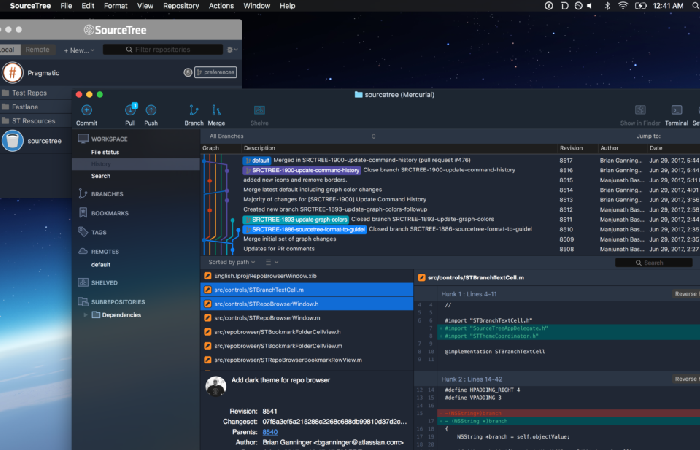Sourcetree Download: A Comprehensive How-To Guide

Managing Git repositories is made simpler using Atlassian's well-liked free Git GUI client, Sourcetree. Its UI is easy to use. Working with Git repositories is easy for developers of different skill levels. This page provides crucial usage guidelines and will guide you through the process of downloading and setting Sourcetree.
Understanding Sourcetree
Sourcetree is a graphical user interface (GUI), which makes the Git command-line interface easier to use.
Its visual representation of your repositories can help you grasp branches, commit histories, and other Git concepts. Among Sourcetree's noteworthy attributes are:
- Visual Repository Management: Easily navigate branches, view the history of commits, and see your repositories as a tree structure.
- Branching and Merging: Creating, deleting, and managing branches is simple. Visually settle issues arising from merges.
- Stashing and unstashing: This function facilitates task switching by momentarily storing modifications without committing them.
- Requests for Pulls: Create and handle pull requests directly from Sourcetree to expedite teamwork.
- Support for Gitflow Workflow: To ensure efficient development, adhere to the Gitflow branching model.

Downloading Sourcetree:
Go to the Official Website: Visit https://confluence.atlassian.com/display/GSWST/Install+Sourcetree on the Atlassian website to download Sourcetree.
Select Your Operating System: For your operating system (Windows, macOS, or Linux), choose the relevant version.
Click this to begin the download: To save the installer file, click the download button and adhere to the on-screen directions.
Installing Sourcetree
Start the Installer: The installer file should be double-clicked after downloading.
Follow the Instructions: The installation wizard will guide you through the process. Choose the installation site, accept the terms and conditions, and select the desired components.
Complete the installation: To complete the setup, click either "finish" or "Install".
Configuring Sourcetree
- Open Sourcetree: Open Sourcetree from the Start menu or programs folder.
- Establish a Git connection: If Git hasn't been configured before, you must first set it up. Sourcetree will ask you to do this.
- Make a Replica or Set Up a Store: To start utilizing Sourcetree, you may either create a brand-new Git repository or clone an existing one from a remote source.
- Analyze the user interface: Acquire knowledge about the Sourcetree UI. The main pane will display the repository's structure, including its branches, commits, and files.

Crucial Advice for Using Sourcetree
- Make Use of the Search feature: Use the search bar to quickly find certain commits, branches, or files.
- Tailor the User Interface: Adapt Sourcetree's settings and themes to your own tastes.
- Activate Your Keyboard's Hotkeys: Use keyboard shortcuts that can help you expedite your task.
- Stay Updated: Make sure you have the most recent features and bug fixes by routinely checking for updates.
Extra Functionalities and Interfaces:
Sourcetree's extra features and integrations can improve your Git workflow:
- Bitbucket and GitHub integration: Easily connect to well-known Git hosting providers.
- Integrate Subversion: Manage Git repositories alongside Subversion repositories.
- Command-Line Integration: Use the Sourcetree command-line interface for more intricate tasks.
- Extensions & Plugins: Utilize third-party plugins to expand Sourcetree's capabilities.
By using Sourcetree's features, these instructions will help you maximize your Git workflow and become a more productive developer.




